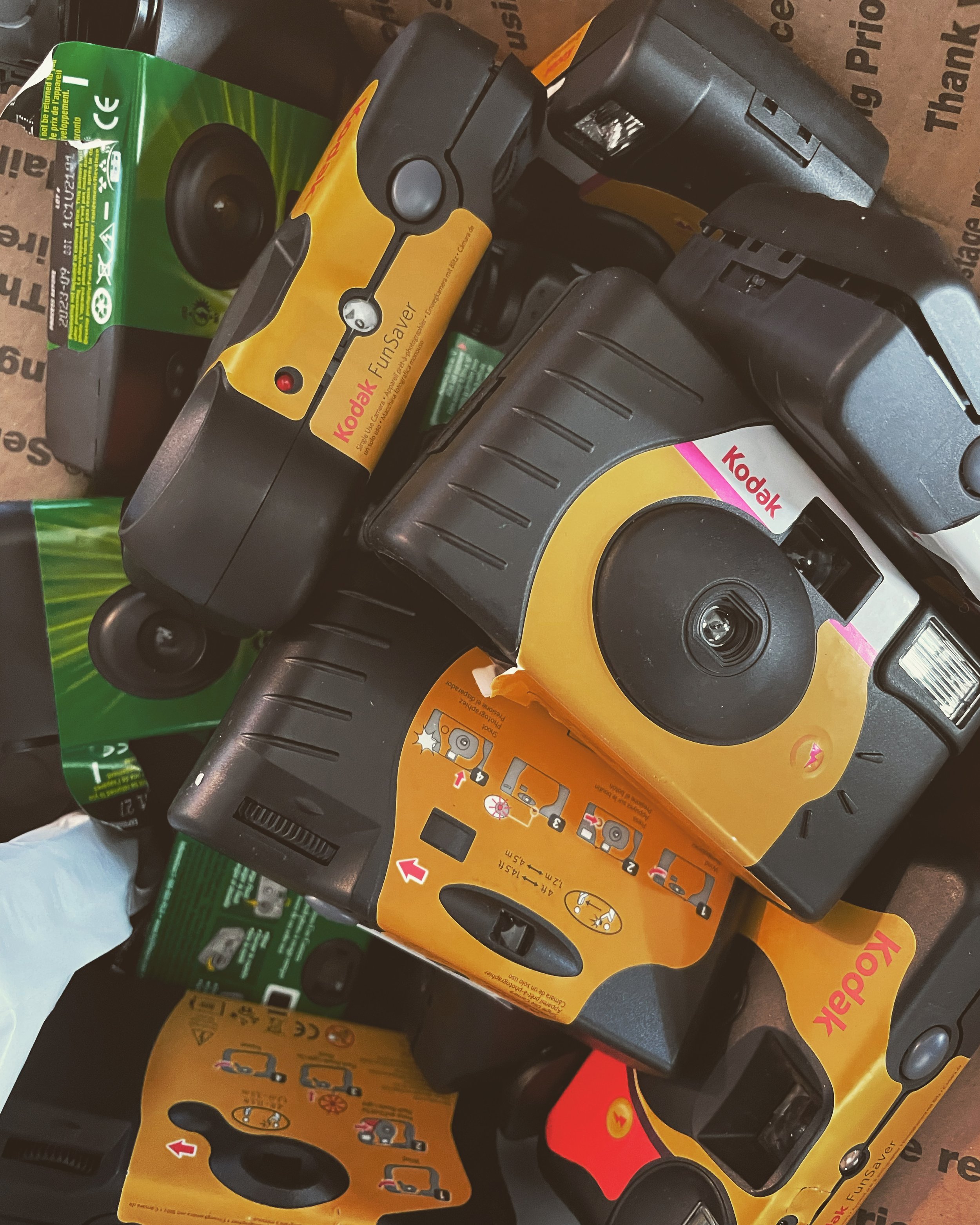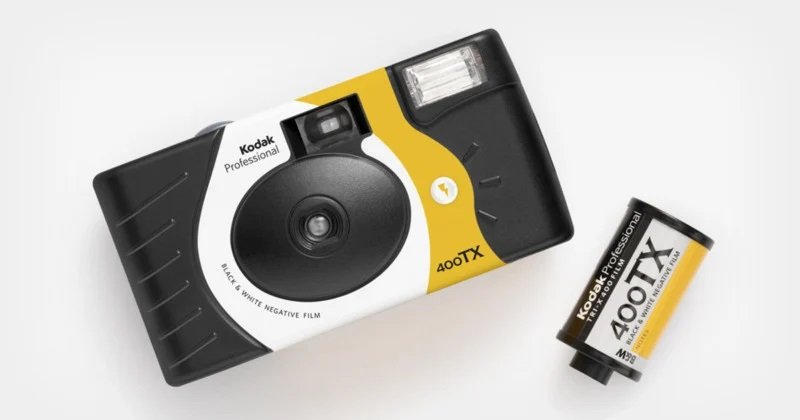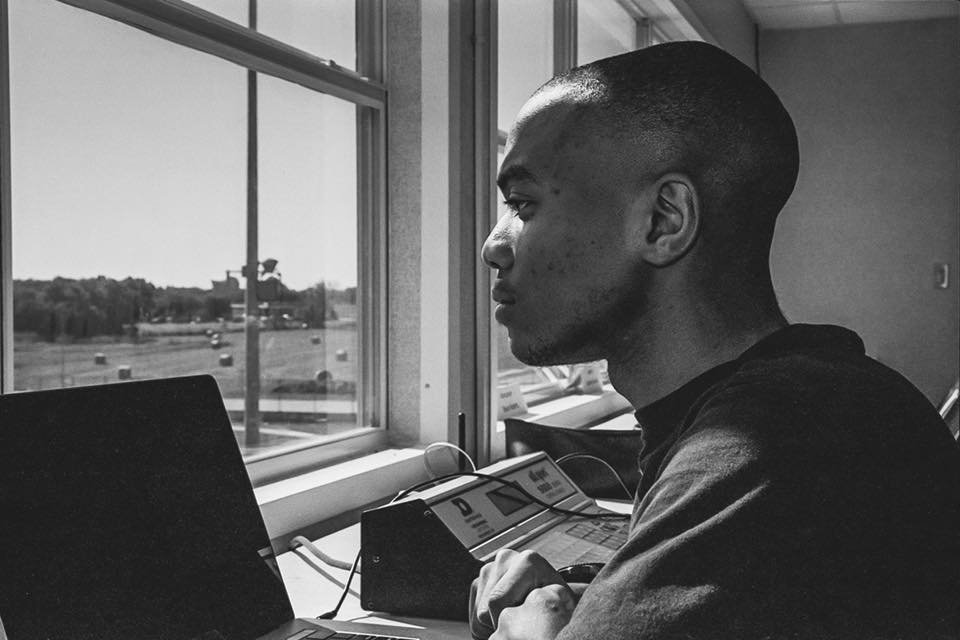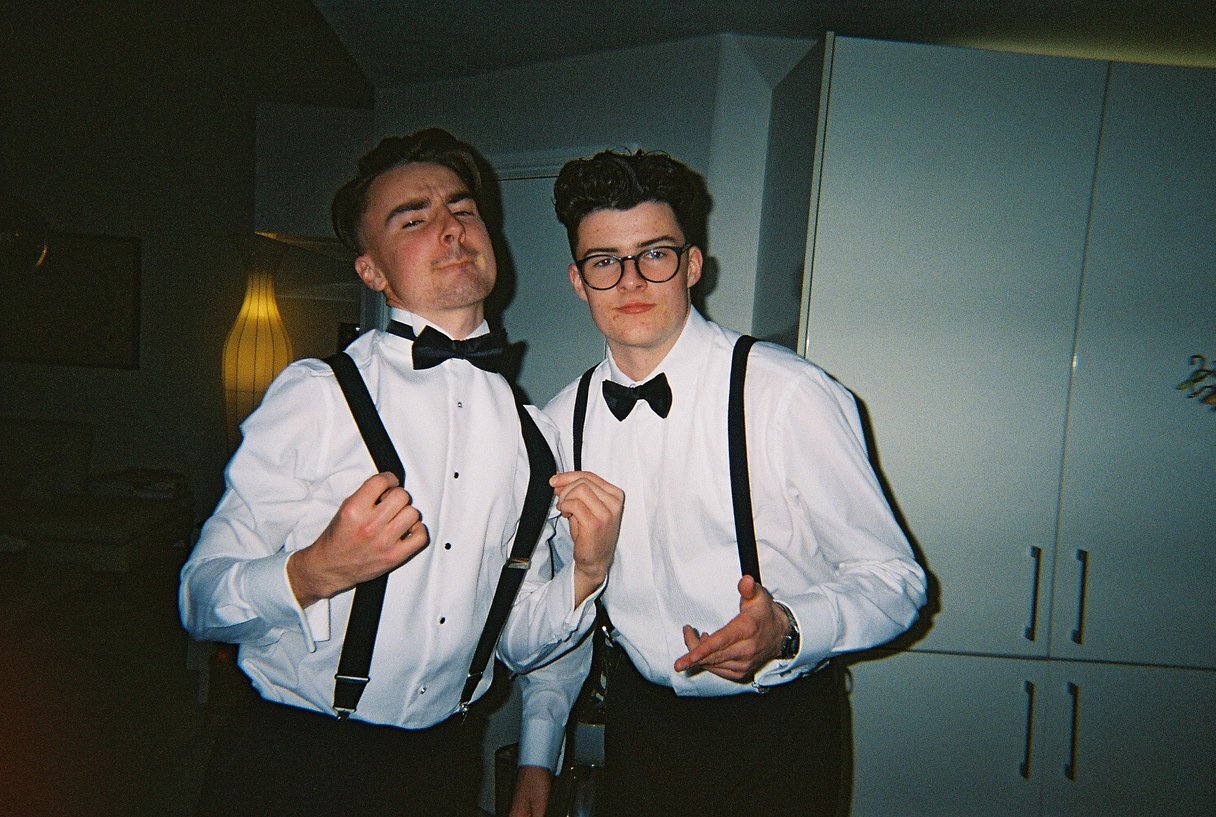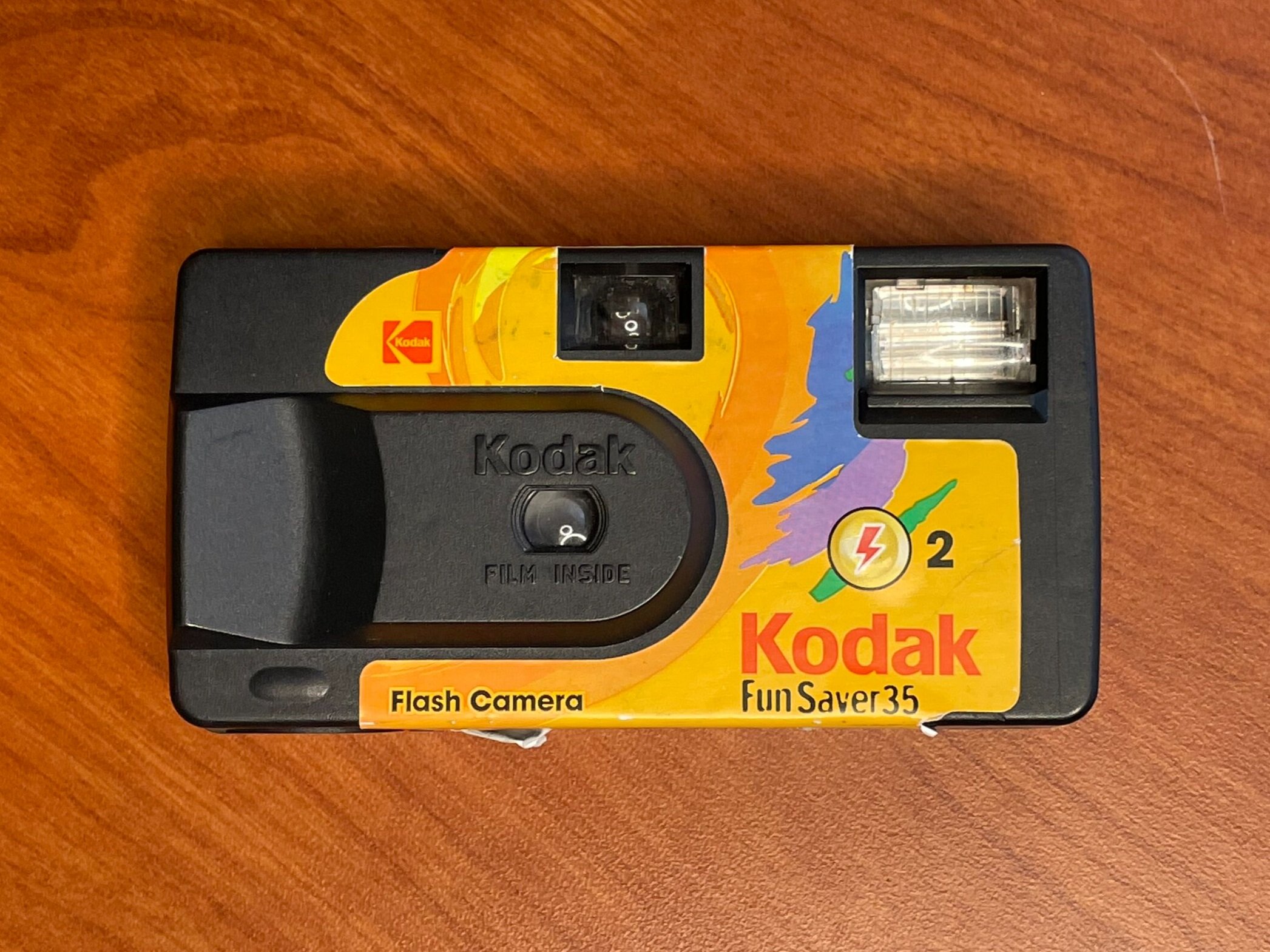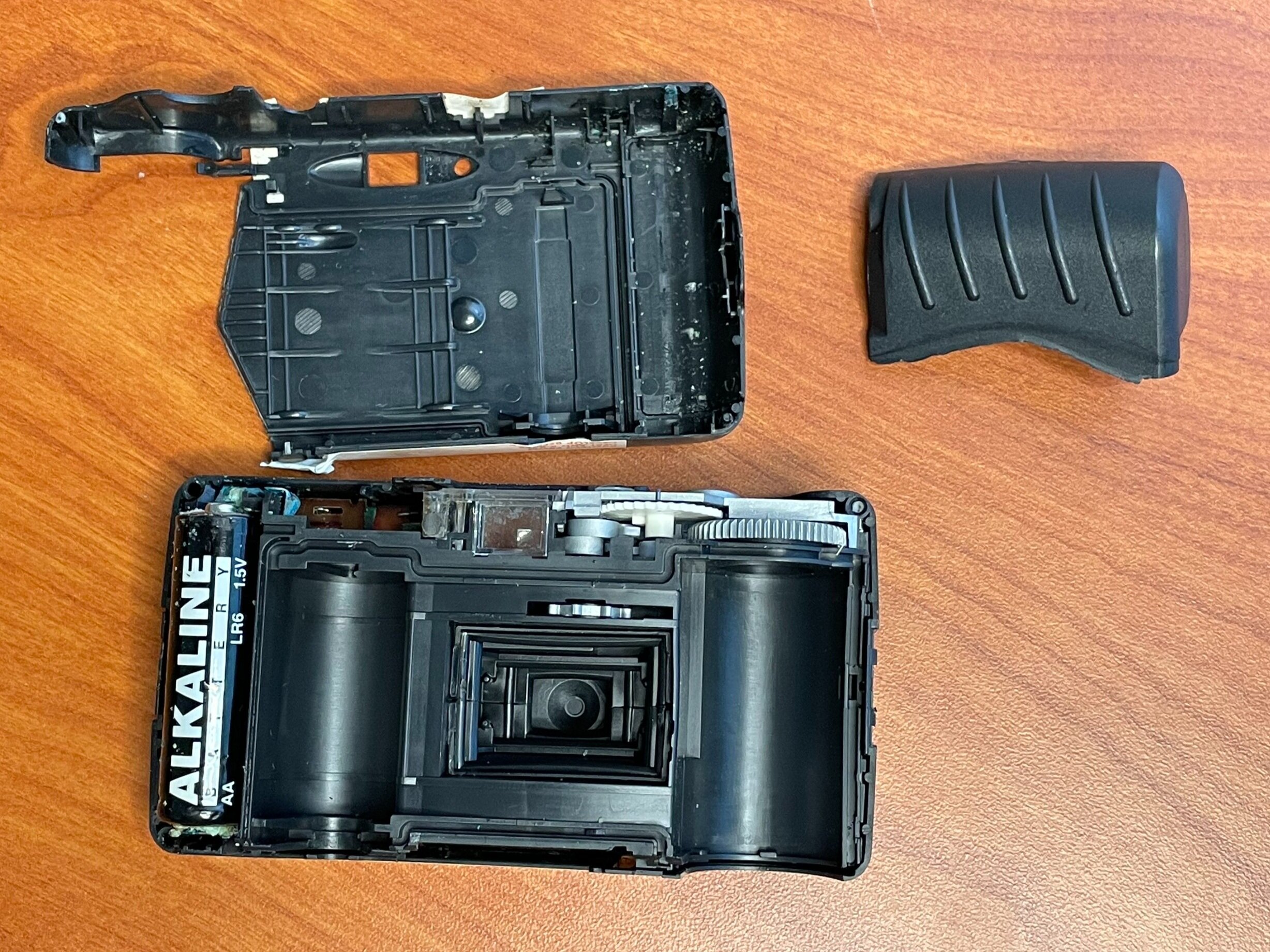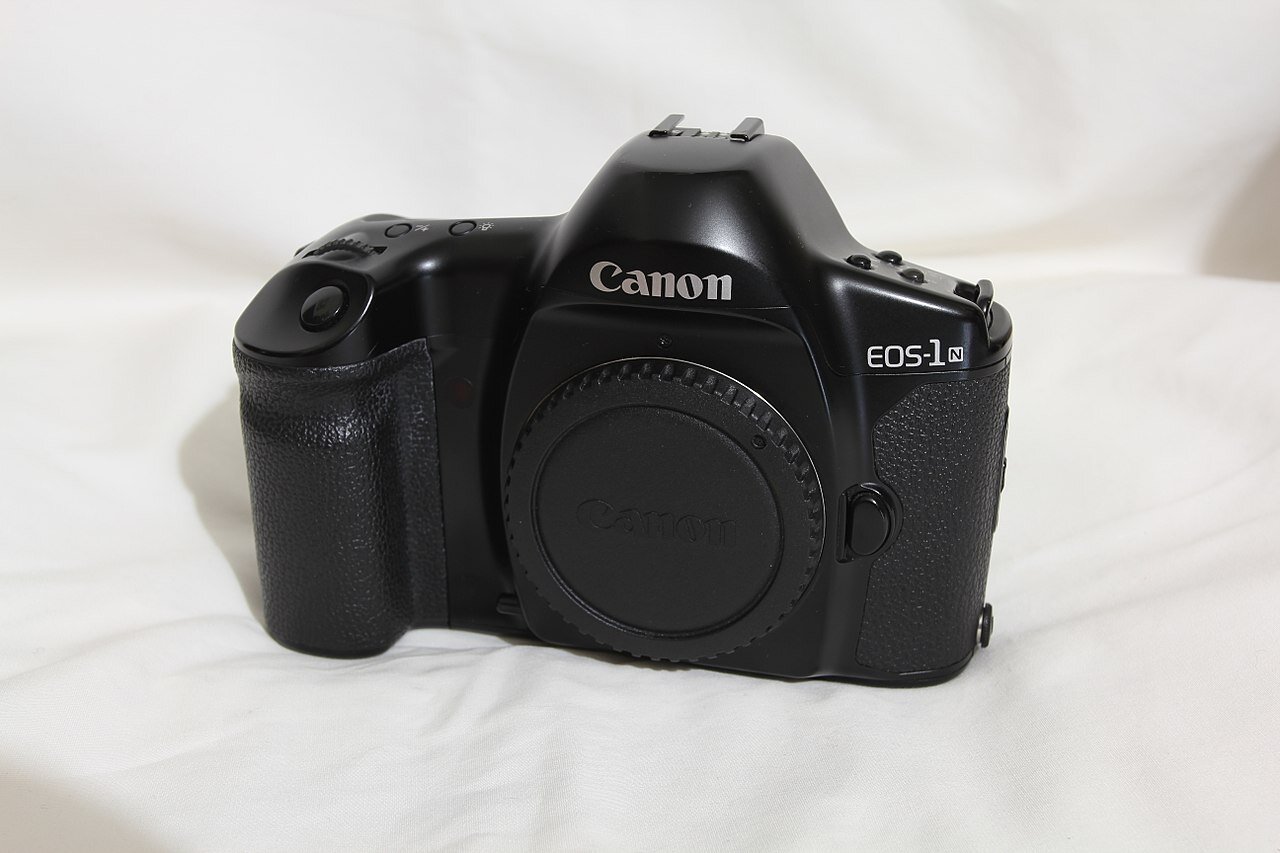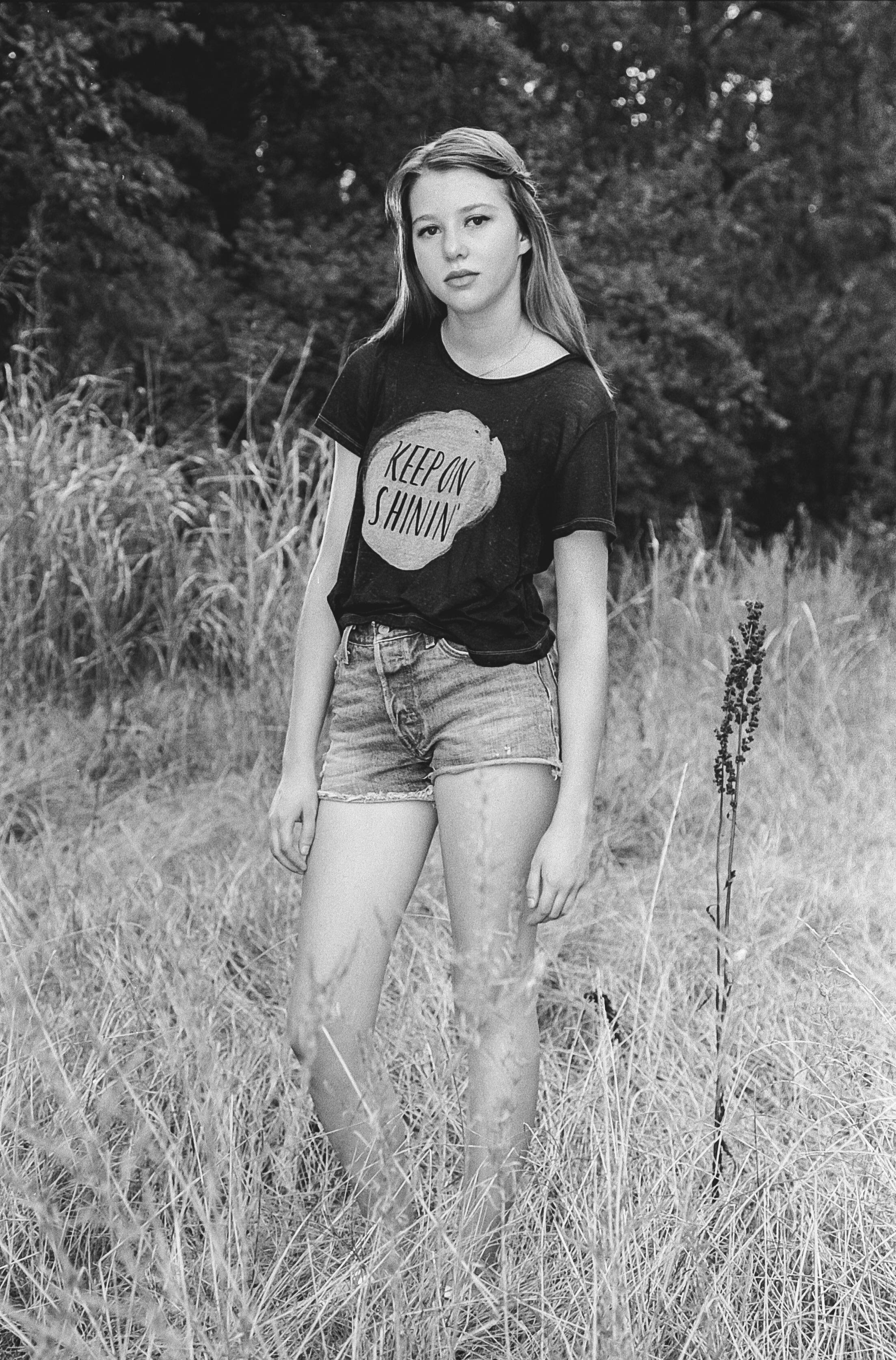Ilford Film Prices Are Increasing – Here's Why
Tariffs are having an impact on film prices! Ilford announced price increases effective immediately on all Film and liquid chemistry products.
As many in the film photography community already anticipated, global trade changes are starting to affect our shelves here at home. On April 2, new tariffs were announced that are now impacting our industry, and one of the first major changes comes from our friends at HARMAN Technology, the UK-based manufacturer behind ILFORD products.
Price Increases Across ILFORD Film & More
Effective immediately, HARMAN Technology has implemented price increases across most of their product lines. Here’s what you need to know:
11% increase on ILFORD and HARMAN film and paper
12% increase on liquid chemistry
11% increase on most Paterson products
Some larger increases on Paterson items manufactured in China
While we understand how frustrating price hikes can be, especially in a niche like film photography, these increases are a direct result of the newly imposed tariffs. HARMAN, like many manufacturers, is responding to increased costs on their end.
What’s Not Changing – For Now
There are a few bright spots:
Phoenix film prices remain unchanged.
Powder chemistry will also stay the same.
Single Use Cameras will hold current pricing while our existing supply lasts – but be aware, prices may rise in future restocks.
Looking Ahead
HARMAN has expressed that they hope to reduce prices if and when trade agreements shift. We’re on the same page. If pricing changes in our favor down the road, we’ll do our best to pass those savings back to you. However, please note that there will be no retroactive price protection should prices decrease.
We know this isn’t ideal news, but we’re committed to transparency and to supporting your love of film photography however we can. If you have any questions or want to stock up before more increases hit, don’t hesitate to reach out or swing by the shop.
Where Can I Develop my Half Frame Film?
What photo labs can develop half frame 35mm film? Here’s a quick overview of places that will and won’t develop your half frame film!
Half-Frame cameras have been around since the 1960’s. They became wildly popular in Japan and as Japanese camera manufacturers began to export them the appeal of the half frame picture format spread all over the globe. Whether you’re buying a vintage half frame camera or something new like the Kodak H35 or the Pentax 17, half frame cameras a fun and make shooting film way more affordable!
Where can I get my half frame film developed?
Once you’ve shot your last half frame on the roll, it’s time to get your roll developed! But sadly, getting half frame film developed isn’t as easy as a roll shot in regular 35mm film format. Photo labs have different capabilities when it comes to Half Frame format film.
Almost any lab can develop half frame film. It’s just a roll 35mm, which is the majority of what all photo labs process. But not all labs are set up to scan half frame film. If you send your film in to a lab that is unable to scan it, they will usually develop it and then just return the negatives to you unscanned, forcing you to have to find another lab that can scan your images and get them digitized for you. Many labs that process half frame film charge extra to do half frame because it can be a slow down in their usual work flow having to deal with a not common format film. To help you sort through the mess, here’s a quick overview of labs that will and won’t develop and scan your half frame film.
Shutter Junkies Photo Lab
Shutter Junkies Photo Lab will develop and scan your half frame film for only $12. You can choose to have your film scanned at a higher resolution for a few dollars more and you can add prints when you purchase processing or just order prints later. And the best thing is that Shutter Junkies does not charge extra to develop or scan half frame film!
To get started, just click here to purchase processing for a roll of 35mm film and selected your scan and print options and you’re good to go!
CVS
CVS is a popular place and very convenient for many people to just swing buy and drop their film off. Unfortunately, CVS does not process and scan half frame 35mm film. If you neglect to tell them your roll is in half frame format, they will develop it but then will send it back to you unscanned as they do not have the capability to scan half frame film.
Walgreens
Like CVS, Walgreens also does not develop and scan half frame film. If you drop your film off with them and do not tell them it is half frame, they will also develop it and then return it to you. You will then have to find another lab to get your film scanned.
The DarkRoom
The DarkRoom will develop and scan your half frame film. The base cost for developing a roll of 35mm film is $13 and you have to pay an additional $6 for processing half frame images. This brings the total to $19 per roll to get your half frame film developed at The DarkRoom. They do give you the option to choose if you would like your images scanned as individuals or in sets of two, which most labs to do not.
Walmart Photo
Walmart is another very convenient place for many photographers to drop off film. But sadly, Walmart does not process half frame film. Like CVS, and Walgreens, they will simply return your negatives to you and you will have to pay an additional fee to another lab to get your images scanned.
Reformed Film Lab
The Reformed Film Lab can develop and scan your half frame film images. Developing starts at $12 and there is no extra charge for developing and scanning half frame film, but there is an increased charge for order prints compared to ordering prints for a standard 35mm roll.
Conclusion - Where can I get my half frame film developed?
Half frame film is a fun and affordable photography format and as long as you can find the right lab to get your images developed, scanned, and printed, you won’t notice a difference between shooting regular 35mm and half frame 35mm film. Avoid big box stores like CVS, Walgreens, and Walmart as they do not scan half frame film. Also make sure and check the pricing for half frames as places like The DarkRoom charge extra to process and scan the film. There are a lot of labs out there like Shutter Junkies Photo Lab and the Reformed Film Lab that will process your images for no additional cost!
Can You Still Develop Old Disposable Cameras?
Can you still get old disposable cameras developed? Yes you can! The images won’t be perfect, but with a good lab you can get some usable images back from an old disposable camera!
Old Disposable Film - Can you Still Develop it?
Not too long ago, we had a big ‘clean-up’ day at our house. Like a lot of people, we had collected too much clutter and needed to purge our house of all of the junk and random things that were just laying around, collecting dust. None of us were looking forward to it. I ended up being assigned the oh-so-much super fun role of cleaning out the random draws in our house. As I went through the seemingly endless odds and ins we had for some reason decided to save over the years, I made a discovery! A discovery that immediately ended my drawer duties, much to my wife’s frustration. In one of the drawers, tucked away for over 15 years, I found 6 disposable cameras! I had no idea all these throw away cameras were there! My wife barely remembered putting them in the draw, but now could not remember what was on the cameras. For a photography and film nerd like myself, finding old disposable cameras or old film is like finding a treasure chest. Who knows what memories and images could have been taken. I was beyond excited!
Many of you have come across old disposable cameras as you’ve cleaned. Maybe they were yours, or maybe they belonged to one of your kids, or maybe another family member, but regardless, once they are found the question arises: “Can you develop old disposable cameras?”
Can You Still Develop Old Disposable Cameras?
The short and simple answer is yes, you can still develop them! The real question is, will we get any viewable images out of our old disposable film? Most people think that a throwaway camera is just cheap and not worth saving once its old but to answer the question about developing them once their old, we’re going to have to consider a number of factors.
What can damage photographic film?
How film works is nothing short of a miracle. Silver bromide and dyes and other layers are applied to a thin film that when it works together are light sensitive and can even display color! There are so many chemical and physical aspects to film, but we don’t want to get too deep here. Let’s discuss the big issues. Heat is one of the biggest things that can damage the film. I’ve developed disposable cameras that have lived in the trunk of a person’s car for several years. Let me tell you, those images were a disaster. The images I was able to salvage had extremely distorted colors and the worst graininess I’ve ever seen. Most of the contrast was washed away also. The images reminded me of being a kid in the 1980s trying to get reception on a certain TV station only to be able to barely get a signal. You could tell there was something there, but not clearly enough to have usable to viewable images.
Besides heat, moisture can have a huge effect on the film. It is possible that moisture in the form of condensation can build up on the inside of the canister even (inside of the disposable camera). Moisture inside of the canister can damage the emulsion or cause abnormal effects with the film itself. Heat and moisture are the enemies of exposed film! But there are ways to battle heat and moisture. Exposed film has two more enemies that cannot be prevented.
One of those enemies is gamma radiation. Gamma radiation is all around us, causing issues all the time, but the older undeveloped film gets, the more it is affected by gamma radiation. According to Kodak, gamma radiation has an effect on the image effectiveness of the film, but it mostly increases the appearance of grain and fog in the image. The older the film gets, the grainier it is going to become. I’ve developed some films that are 20 to 30 years old and have terrible amounts of grain that really begin to distract from the image.
The other issue that drastically affects older undeveloped disposable cameras is the natural order of the energy and the chemistry that makes the film work. Essentially capturing photons in the form of electrons in silver-bromide, during the development process those molecules are transformed into fixed silver which creates an image. Until the film is developed, you actually don’t have an image on the film. Rather, it is a latent image made up of captured energy. And like all prisoners, that energy just wants to escape. Over long periods of time enough can escape to really degrade the quality of your image.
How I can slow this natural decay?
Storing your Disposable Cameras in the fridge helps! Keeping the film cold prevents those electrons from breaking free and making a run for it. But even cold storage will not delay decay for long. Most exposed films need to be developed within 6 months of shooting. Any time after 6 months, your images are going to start to break down. Now, don’t get me wrong, this is a very slow process. Disposable cameras that are 2 years old won’t be that bad. Disposable cameras that are 22 years old however will begin to look kinda bad. And to add to the issues, most manufacturers were not putting the best quality film in disposable cameras in the late 1990s and early 2000s. Kodak Disposable Cameras and Fuji Disposable Cameras generally hold up ok. But store brands and other off brands do not. And if you purchased cameras that were refurbished in china (most Etsy wedding cameras are of this type), those go really fast because they use really really a low-quality film stock.
The bottom line is if you want the best possible images from your disposable camera, store them in a cool dry place and get them developed as soon as possible!
What will the Images from My Old Disposable Camera Look Like?
So ok, you didn’t do any of the things above and you’re like us and have had these disposable cameras just sitting in a draw for years needing to be developed. What are your images going to look like?
The pictures from your old disposable camera are more than likely going to exhibit three traits. The first trait is decreased contrast. Your image will appear flatter with a less noticeable difference between the highlights and the shadow.
The second trait you will notice is distorted color. Your final images will have color shifts. Some of which can be easily fixed but some are impossible to restore without extremely detailed work. A way to work around this is to develop your old disposable cameras as black and white images. While you lose the color (which is distorted probably anyways) you can salvage some of the image quality. You can ask the lab to process your disposable camera as black and white if you’re worried!
The third trait is graininess. And oh my goodness do old disposable cameras get grainy. Combine that with the first two issues and you can end up with a mess of an image.
If you take a look at your negatives, you will also notice some pretty severe curling and brittleness. There is also a good chance that the negatives will be substantially darker than fresh film.
Is it worth getting old disposable cameras developed?
Absolutely! The images on an old throw away camera may be a beautiful reminder of the past, holding precious moments, the faces of friends and family or special events that you have long forgotten. But you shouldn’t wait to get them developed! The sooner you get the processed, the better. The decay is only going to get worse!
Where can I go to get old disposable cameras developed?
There are actually a number of places that will develop your old disposable cameras. While you can take them to a drop-off location like CVS or Walmart, they may not provide your older film with the special care it needs. We could recommend using one of the higher-quality mail-in services that exist. Check out our post on Where do I go to get my Disposable Cameras Developed?
If you’re looking for a quality and customer service-centered photo lab for your old disposable cameras, then our photo lab may be exactly what you are looking for! We develop hundreds of disposable cameras every month, both new and old! Click HERE to get started!
Finding Treasure on an Old Throwaway camera
How do you get images off of an old disposable camera? That’s easy, you get those old throw away cameras developed, which is exactly what I did when I found those cameras in our draw. On those 6 cameras were images of our grown son, and family that had passed away from a big family birthday party we had had years ago. As I carefully developed and scanned the images I couldn’t help but well up with tears of joy at the smiling faces I saw, some of them I haven’t seen in years. My adult son’s little kid face, my grandfather’s amazing smile, my dad’s goofy grin. All images I immediately treasured, which had been almost completely forgotten about if my wife hadn’t made me clean up the drawers.
I shared all of those images with my family. We laughed and cried together. If you find old disposable cameras, remember that the cameras are disposable, but the memories inside are not!
Also, check out this great Kodak resource on storing and handling unprocessed film!
Kodak Reveals a New Black and White Disposable Camera!
Kodak releases a brand new disposable camera with professional-grade black and white film! Check out this article to learn more!
The only frustrating thing about Disposable Cameras for me is their lack of variety. You can choose between Kodak and Fuji and you just get a low-grade color negative film in both. Or, if you want black and white, Ilford has a disposable camera out there. Really the only option you have is what film speed do you buy.
Now Kodak Alaris is upping the game with the announcement of a new black and white disposable camera! Not only is it black and white, but it comes loaded with Kodak Tri-X 400! Which just happens to be my absolute favorite black and white film.
The newly announce Kodak Professional Black and White Disposable Camera with Tri-X 400 film
Disposable cameras (also now called single use cameras) are so much fun and so convenient, but they do have their weaknesses. Two main weaknesses to be exact. The first is the low quality plastic lens. While these have gotten remarkable better over the years, a plastic lens is just never goin to give you the sharpness a glass lens will. There’s no way to fix this unless you’re will to pay a lot more for the disposable camera, which at the point, you might as well just buy a used point-and-shoot. The second drawback to disposable cameras is that the film that goes into them is really low-end film. Don’t get me wrong, it works fine and helps to provide the disposable camera aesthetic that we’ve all come to love. But I always think to myself, what if these single use cameras came with slightly better film?
A Disposable Camera with Professional Film
Kodak has seen the trend and has decided to invest more in the disposable camera market by offering a camera with one of their professional films, namely Tri-X 400. While the lens is still plastic, I’m convinced the marriage of the single use camera format with this black and white film will produce some amazing results. I cannot wait to get my hands on one!
The camera itself has a basic disposable camera set-up. Each camera comes in a plastic body with an automatically recharging flash powered by a AA battery. The camera body is nothing new and appears to be very similar to Kodak Max Flash disposable camera.
The 35mm film inside is Kodak extremely popular Tri-X 400 which is a high-speed panchromatic film that works great in low light and bright sunlight. Tri-X400 has a wide latitude and great in all sorts of situations. Color negative 35mm film often really struggle in low light and also has a tendency to desaturate in bright sunlight. Consumers will have a lot more luck capturing images at events with varied lighting, such as weddings and concert. The only sacrifice if the color.
Kodak Tri-X 400 is one of my personal favorite film stocks. I keep boxes of it on hand in several formats at all times. I’ve used it in a variety of lighting situations and events and I have never been disappointed.
Where can I get Kodak Disposable Cameras Developed?
When it comes to their color negative single use cameras, almost anywhere! You can actually read more about getting your disposable cameras developed HERE in our article “Where can I get My Disposable Camera Developed”. But this camera uses black and white film, so you will need to make sure that the place you are sending your camera can process this film!
The good news is that our lab can process these black and white disposable cameras for you! Just click this link to our Disposable Camera Processing to get started.
Technical information about the Kodak Professional 400TX Single Use Camera
If you’re looking for more technical information, here are two documents from Kodak that should help you find the answers you’re looking for. This PDF is an FAQ you can download with lots of common questions and answers directly from Kodak. This PDF is the Kodak Tri-X 320 and 400 film technical data.
Where Can I Buy the Kodak Black and White Disposable Camera?
If you’re looking to buy a Kodak Professional 400TX Single Use Camera, they’re coming soon! But sadly, they aren’t out yet. We will be watching daily as we can wait to buy a few ourselves and we will update this information as soon as they become available!
The Summer '21 Trend You Don't Want to Miss!!!
Make memories this Summer with Disposable Cameras!
Summer is almost here and there are all sorts of new trends in fashion, music, movies, and fun on the horizon. But today we want to talk with you about one new photo trend that on the rise on Instagram and Twitter and is set to be the BIG DEAL for Summer 2021.
And that big deal is…
Disposable Cameras!
Why Disposable Cameras are Great for Summer
When it comes to summer and fun, you don’t want a camera that’s going to slow you down! here’s why disposable cameras are great for everything you’ve got planned:
Small & compact
Cheap
Flexible for any shooting environment
Easy to use for anyone that wants to pick up a camera and get great photos!
Night or Day - The Look is Amazing!
Disposable cameras produce a really unique look. The plastic lens, the front facing high discharge flash tube, the grain and look of the film, and sometimes the occasional finger that gets in the way, disposables produce a really unique vibe that’s defining the Summer of ‘21. If you’re shopping for a camera you can use day or night, then you definitely want to pick up the 800 ISO film speed models. We carry the Kodak FunSaver in our online store - CLICK HERE TO CHECK IT OUT! - its a great night or day disposable.
Getting the Film Developed is Easy!
Even if you’re on the road, you can just drop your camera (or the film by itself if you want to open up the camera - follow this helpful guide to get the film out of your disposable) in the mail or simply stop by a CVS or Walmart! Depending on who you use, you can have your prints sent directly to your house and your scans (digital images) will be emailed to you! In a couple of days you can have your images back just in time to share them with family and friends!
Don’t Forget to Share those Images on Instagram!
Tag your photos with #disposablecamera to make sure people are taking note of what you’re doing this summer!
How to Get the Film Out of a Disposable Camera
How can you get the film out of your disposable camera with out damaging it? Its easy! Just follow this simple guide and you’ll have your film in hand in no time!
A Basic Overview
After reading my previous blog post about Disposable Cameras - I’m sure the excitement and motivation completely overwhelmed you and you ran out immediately and bought a fun little disposable camera to take some photos with. You spent time with friends and family, snapped up all 27 exposures before you had even realized it and then that familiar feeling as you try to advance the film - clickity clickity clickity, nothing is catching. You’re out of film.
So what do you do next…
You have some options as far as developing your film goes. You can actually just drop the entire camera off somewhere and get it developed. The bad thing is that most of the location places that will develop your film also won’t return your negatives and we definitely don’t want that. You can always develop it yourself or your can mail the film into a trusted lab that can process the film and return you negatives to you. These are both great options but sadly, both of them require you to get the film out of the disposable camera before you do anything with it.
Here’s a quick step by step guide on how you can get the film out of your disposable camera!
Getting the Film Out of Your Disposable
Step 1 - Remove the label/wrapper
The disposable camera itself is just a general plastic camera. Each company puts their own branding on the cameras in the form of an adhesive label or a loosely fitting card stock type wrapper. In most cases, you will need to remove the label to get the camera apart. Its normally easy to do and it does not matter if it gets torn or damaged. On some cameras, like the one in the photos, the label doesn’t really wrap around or interfere so it can simple be left on.
Step 2 - Locate and Pry Open the Tabs Holding the Camera Together
Usually these tabs are located on the sides of the camera. If you are just wanting to get the film out of the camera, all you need to do is pry on the right side (the side with the film advance) of the camera. Almost all cameras are designed to break easily, almost like a built in film door. Of course, only removing the part covering will completely break the camera, so reusing it is out of the question. Most disposable cameras will have tabs on both sides however so that you can pry up and remove the entire back. There are usually other little tabs of various types along the top and bottom that simple help to keep the back in place and light tight, these may require a little pressure/prying to get loose.
Step 3 - Remove the Film
I don’t need to say much here. It literally just falls out. Really simple. Its self-contained in the little 35mm film cartridge, just like any other 35mm film.
Step 4 - Remove the Battery
Most of these cameras have a flash and are powered by a AA or AAA battery. For the 27 exposures you used, you barely drained any energy from this battery. Take it out and use it somewhere else! You know you never have a battery around when the TV remote dies!
On a side note, if you did not remove the entire back from the camera, you will not be able to access the battery.
Step 5 - What Do I Do with the Camera?
You have a few options. If you can separate the components its possible to recycle some of them. I actually put my disposable cameras back together, leave the battery in them and let my kids have them. They love to pretend they are taking pictures just like their dad! Its a super cheap but fun toy. You can also just throw it away. They are made to be disposable after all.
Don’t Let Your Disposable Camera Film Sit Around!
A lot of people shoot their 27 exposures and then put their cameras down because getting the film developed is a bit of process and they never come back to them. I have people come up to me all the time and ask about what they should do with the box of disposable cameras they have. Image quality does degrade over time, especially if your disposable cameras end up in the attic. Get those photos developed and start enjoying them! We do offer film processing for mail in and drop off film. If you have a bunch of old disposables that need to be developed, give us a call or send us a message and we can negotiate a bulk rate for getting them all developed and scanned! Click the button below to order film processing and lets get those images out of that plastic disposable and onto your phone or Facebook or printed on paper, anywhere that they can be enjoyed!
Want to see a video of how to do this?
Check out this very short how to video that will show you exactly how to get film out of a disposable camera!
Film Photography as a Hobby
Film photography as a hobby? Absolutely! Its fun, affordable and really easy to start!
There are millions of people who enjoy photography. From casual photos of friends and family to more serious and stylistic photos taken just to try to communicate something deep and meaningful and every photo in between, photography is a beloved hobby with several easy and affordable entry points from simple point-and-shoot digitals to Instax to Polaroid. But while digital photography is an easy and convenient hobby to pick-up, is film photography something a hobbyist could into without much cost or a steep learning curve?
Can I Shoot Film as a Hobby?
Absolutely! You do not need to be a professional to be a film photographer. 35mm film is still available in stores like Wal-Mart, Target, CVS, and Walgreens. Rolls of 35mm film come in color negative, black and white negative, and color positive or slide film. Film rolls also come in 24, 27, and 36 exposures (the count of photos you can take on a roll) as well as a variety of ISO’s for taking photos in different lighting. Prices range from $4.19 per roll to $23.95 for high end professional and specialty films. You can check prices on 35mm film at Amazon by going here!
Most individuals avoid film photography because they are inexperienced with the equipment, unfamiliar with how to process their film, and unsure of what film to buy. But a little bit of advice can help you get started and can having you shooting your first roll of film in no time!
What Kind of Film Camera Should I Buy?
This is a difficult question to answer because there are so many factors to consider. Availability, affordability, availability, automation, and ecosystem all need to be considered when it comes to purchasing a film camera. As you consider these factors, weigh them to see which factor is going to be the most limiting for you and you can start from there.
Availability,
There are very few film cameras in production today. Lomography.com still produces a few plastic ‘toy’ cameras. There are several ‘Simple’ use cameras out there as well. All of these are at the lowest end of the quality scale, but because they are new, might come with a higher price tag than some used models.
There are a lot of used cameras on the market out there. 35mm film cameras mostly just were put in the back of the closet and have been sitting. Locally, you can find them for sale on Facebook market place. In my experience, the selection is always limited, but its a great place to start! Ebay is also a great place to look. Ebay usually has a broader selection but you lose out on the ability to inspect the camera yourself before you buy.
Affordability
Let’s be honest, if you have money, you can spend it all on a camera. Setting a budget and sticking to that budget is important, after all, you don’t what spend all of your money on your camera and have nothing left over to buy and process your film! You can expect to spend anywhere from $20 to $200 for a good used 35mm film camera. If you’re just getting into film, get something cheaper. If you’re looking to make this something you do for a while, you may want to shoot for a middle of the road camera. Mainly, inspect the camera for functionality and features and consider what your budget is when buying.
Automation
Unlike modern cameras, a large number of film cameras a completely manual or only offer a few automatic features. You might find a shutter or aperture priority mode, but that may well be it. There are more automated 35mm cameras out there, but usually, their prices are higher because of the extra features. But, it doesn’t hurt to get a manual or almost completely manual camera. its a great way to experiment and learn. Combining the film with a manual camera will force you to think about every shot you take, which is a great discipline to develop while you are starting out. I have found that when I shoot with the more feature rich cameras I tend to think less about things like composition and letting and I get lower quality shots.
Ecosystem
Most cameras fall into an ecosystem of lenses and accessories. If you’re already a Canon shooter, then you should stick a canon SLR. If you’re already using Nikon, definitely stick to Nikon. If you don’t have anything, well then pick one and do a little research as to what other lenses are out there for the camera, does this camera have any cross compatibility with any other accessories or lenses, how durable are these cameras and how repairable are these cameras? Even as a hobbyist, when you buy a camera, you’re buying into an ecosystem.
What Kind of Film Should I Buy?
To be honest with you, I’d go cheap at first. When I was first using film, sometimes I would forget how to do things and would accidentally expose an entire roll of film by opening the camera or forgetting to rewind. Once I forgot to release the film sprockets and I tried rewinding an entire roll with the sprocket lock still engaged. I shredded an entire roll of film. I really love the Kodak UltraMax 400 film for beginners. Its a great film, really inexpensive and produces good color results for a decent price. Its a great daylight film and works well in some shadows too. Inside photos with a flash also produce good results but expect a lot of light fall-off and darkness if objects or people are outside of the flashes power.
We’ve also got a great guide to the 3 Best Kodak Film for Beginners here - it has a lot of great information that could help you make a more informed decision!
Where can I get my Film Processed?
Processing is the hardest part, in my opinion. Locally, you can get your film processed at CVS, Walgreens, and Walmart, but they will not give you your negatives back. You definitely WANT your negatives back! They will give you prints and scans (usually lower resolution ones) but the negatives get trashed. If you’re local to us (East Dallas/East Texas), we can process your film for you! We offer drop-off and mail-in. Just click here to get the process started!
If you have the patience, you can mail your film into a place. There are several labs out there and most of them are amazing. Richard Photo Lab is a great place and has some amazing prices! The Dark Room is another great lab I’ve used and love their results. There are lots of other options out there, just jump on Google and find a lab that works for you!
Of course, if you’re feeling adventurous, you can always develop your own film at home. This requires quite a bit of equipment and some patience, but it is an option if this is a hobby you plan on keeping up with for a while.
Almost all labs will get you scans and/or prints and many offer online galleries which are great because you can view your photos as soon as they are processed, download them and share them all over the place!
Film Photography is a Great Hobby to Start!
Unlike digital photography, there’s more of a deliberate action with each press of the shutter button when you’re taking film. I don’t know if its the limited exposures, the cost, the time, or what but it forces you to think more about what you are shooting and in my opinion, always produces much better results! With the availability of so many great film cameras at really low prices and the convenience of companies like Amazon and B&H Photography, you can get any film you want delivered in just a few days if not sooner! If you’ve been hesitant to get in to film photography, now’s a great time to start AND we would be happy to help you or answer any questions you might have! We love film photography and in the 35mm film format, we’ve had some of the most fun you can have with a camera! Contact Us if you have any questions and lets get you shooting film asap!
The Canon EOS 1N
If you’re considering picking up a Canon EOS 1N - this is a great camera to work with!
I own quite a few film canon film cameras. I enjoy using all of them from time to time, but the Canon 35mm film camera that I used the most is the EOS 1N. The familiar layout combined with the fact it uses all of the lenses I already own make it the camera I reach for first whenever I go out. If you’re considering getting into film or stepping up from an older Canon AE-1, then this is definitely the camera for you!
Canon EOS 1N Questions
If you’re considering a 1N, then you might have some questions. I’m going to start with a few common questions to hopefully help you find the information you’re looking for.
What kind of film does the Canon EOS 1N use?
The 1N is a 35mm film camera and can use ALL 35mm films in a standard film cartridge. Color, black and white, and specialty stocks all work great with this camera. Certain films might not have the ISO data encoded into the film and therefore you might have to set the ISO manually, but the film will still work fine in the camera.
What kind of lenses does the Canon EOS 1N use?
The 1N uses Canon’s very popular EF-mount. EF lenses are still in production and there is an abundance of used lenses out there on the market. Beside the option to buy new or used lenses, EF lenses from Canon also come in a broad range of focal lengths, prime and telephoto, as well as a broad range of glass quality from some very basic beginner lenses all the way up to their L-series glass which boasts some of the most beautiful optics in photography.
What kind of batteries does the Canon EOS 1N use?
The Canon EOS 1N body uses a 2CR5 battery. These batteries are available locally at battery and electronics stores and also available on Amazon. I’ve used the Panasonic 2CR5 as well as the Energizer 2CR5 and have had good results from both.
If you get a 1N with the optional BP-E1 battery pack then you could simply load AA batteries. These battery packs are no longer produced but if you can pick up a used one its a simple addition to your Canon 1N SLR.
Can I use a flash with the Canon EOS 1N?
Yes! All of the Canon branded flashes work great with the 1N. There are also several non-Canon flashes that work great with the camera and are much more affordable. You can pick up an older used flash or buy a brand-new one. The 1N utilizes TTL to help you get a better result while using a flash. I personally recommend the Canon Speedlight 600EX II-RT. It’s a little bit pricey, but the features and build quality make it totally worth the price!
Does the Canon EOS 1N have autofocus?
Yes! It features a 5-zone autofocus utilizing TTL phase detections. The focus zones consist of a series of five little boxes that are placed across the middle of the image. You select with zone you want to use and then place and half-press to focus. The autofocus is a little slow compared to more modern cameras, but it is accurate.
How much does the Canon 1N cost?
You can expect to pay between $100 to $350 for a used Canon 1N according to my research looking at Ebay, Facebook Marketplace, and a few used camera dealers. The condition of the camera affects the pricing the most.
Canon EOS 1N Review
I bought this camera as a compromise. I actually wanted a Canon EOS 1V, but the prices of the 1V were outside of my budget. I spent quite a bit of time looking at used camera sites and Ebay before I finally found a camera that was in good shape at a decent price. While I generally do love the camera, it does have a few issues. Here’s a breakdown of the pros and cons of the Canon EOS 1N:
Pros
Familiar form factor with other Canon SLR/DSLR bodies
Popular lens-mount (Canon EF)
Availability of both new and used lenses
Modern features like autofocus and TTL flash
Auto-winding film
Rugged design
Cons
Batteries are a little inconvenient to find sometimes
Battery has some connectivity issues (I have had to recently insert a piece of tape to keep the battery pressed against the contacts)
There’s a common issues with the shutter becoming stuck and not cycling, but is easy to fix (has only happened to me once when I first got the camera)
Focus is limited to only 5 zones and is a little slow (great for portraits, not so great for events…)
Should You Buy the Canon EOS 1N?
Absolutely! If you’ve already invested in the Canon eco-system, you can pick up a body and use all of your existing accessories, which is a huge win. If you’re just getting started but know you want to live in the Canon eco-system then anything you buy will work on all of the existing Canon equipment (with the exception of the newest mirrorless devices that use the new RF lenses). Also, if you’re interested in getting into film but don’t want to go the fully manual route that many of the older 35mm SLRs require you to take, then the 1N is a great camera at a great price-point that offers enough modern features to get you started. Just rotate the mode selection into P for Program and shoot away and you’ll get great results almost every time!
There are a lot of great features and specific settings that can help you get a lot out of the 1N - but honestly, I don’t use most of them. I mainly use mine for shooting 35mm film at weddings and special events when I need the speed of autofocus and the ability to use the lenses I already have with me. When I get an opportunity, I will also be picking up and Canon EOS 1V and will more than likely retire this camera. But its still a great workhorse and is dependable in spite of its age!
If you need more information, make sure and download the user manual below! It’s got everything you need to know about using the camera on a daily basis!
Check our Online Store for the Canon 1N
We occasionally carry these in our online store! Click here to see if we have any in stock!
Recommend Films to use with the Canon EOS 1N
If you’re a beginner, here’s some links to some great film to get you started with your Canon 1N.


